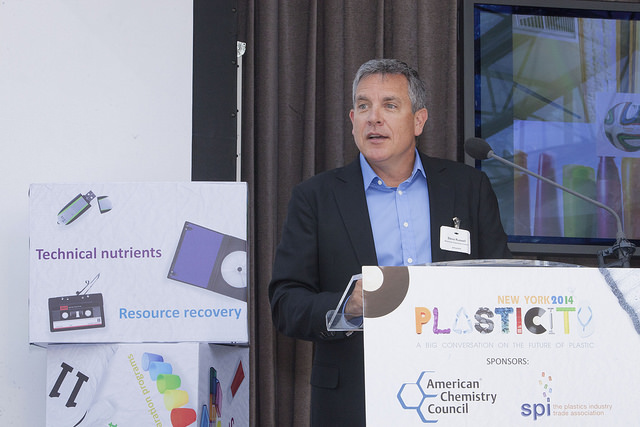Among all the discussion and debate about improving how chemicals are managed to ensure the public and the environment are protected from potentially harmful exposures, at least one point stands out on which we can all agree: better access to information, as well as a greater understanding of that information, will help lead to better […]
What makes polystyrene so different from styrene? It’s a matter of chemistry
This post was updated in April 2016. The updated version can be found here. The U.S. National Academy of Sciences (NAS) has released its review of the U.S. National Toxicology Program’s (NTP) June 2011 decision to include styrene in its 12th Report on Carcinogens (RoC). In reviewing the NAS findings, it’s important to understand the […]
Picking up the pace: Q&A with DHS director David Wulf on chemical security
By any measure, it’s been a very productive year for advancing the effort to secure chemical facilities and protect communities. Thanks to a strong commitment by leadership at the Department of Homeland Security (DHS), the Agency has made significant progress addressing issues with the Chemical Facility Anti-Terrorism Standards (CFATS) and strengthening its working relationship with […]

Plasticity 2014: New ways of thinking about old problems
Plasticity 2014 was an inspiring event. This annual discussion about the future of plastics brings together designers, brand owners, environmental groups, and public and private sector leaders to discuss design solutions, material innovations, plastic recycling, and waste reduction with the aim of encouraging further innovations and collaborations between stakeholders. Plastics have become the “go to” […]
New study highlights significant potential to recover energy from waste in the U.S.
Most people don’t give a second thought to where their trash goes once it’s hauled away, but thanks to exciting developments in technologies that recover energy from waste, it’s worth taking a closer look. Today, a growing number of technologies are able to turn non-recycled trash can into valuable products, including energy. To better understand […]
ACC champions transparency in flame retardant debate
Tim Shestek, senior director of State Affairs at the American Chemistry Council (ACC), testified June 24 before the California Assembly Committee on Business, Professions and Consumer Products on Senate Bill 1019 (also known as SB 1019), legislation that would require manufacturers of upholstered furniture to indicate whether their products sold in the state contain flame […]
- On the road with #ACCaugust - 2015
- Chemicals in food: Top chemical food myths debunked…naturally! [video]
- Nanotechnology could be the next big thing in medical care
- Fueling Export Growth (Part 2 of 2): Why the expected surge in U.S. chemicals exports will depend on our country’s ability to deliver on its ambitious trade agenda
- Fueling Export Growth (Part 1 of 2): U.S. chemical exports linked to natural gas could double by 2030; plastics products leading the surge
- Proposed marine debris legislation helps fortify industry’s ongoing work March 31, 2017
- ‘BPA-free’ meets ‘fake news’ March 29, 2017
- Working together to improve EPA’s proposed rules for chemical prioritization and risk evaluation under the Lautenberg Act March 23, 2017




